Interested in creating beautiful, stop-and-stare patterns that will captivate your viewer?
Understanding the different pattern repeats and how they work, then marrying them with pattern styles is a magical equation worth grabbing that [Apple] pencil for. No head scratchers here, though; I’ve got everything you need to start creating those eye candy patterns below!
What are the 3 different types of pattern repeats?
Pattern types inform how your design motifs are repeated. The three most popular pattern types are: Full Drop, Half Drop, and Half Brick patterns.

These pre-defined repeats allow you to create seamless and visually appealing patterns. Afterwards, they can be applied to a wide range of projects, from textiles/fabric to wallpaper to digital prints and graphics.
Below, we’ll break down each type of pattern repeat with examples, how to create them and afterwards we’ll dress em up with style. 💃
Pattern Type #1: Full Drop Repeats
What is a full drop repeat?
Full drop patterns repeat the design motif both vertically and horizontally, while creating a seamless and continuous design. It’s constructed by repeating the entire pattern block in a grid-like formation, making it easy to apply to different products and surfaces. Designers often use full drop repeats for creating patterns on large surface areas like wallpaper, bed linens, or tablecloths. Its simplicity and versatility make it a popular choice, especially for those new to pattern design or aiming for a classic and timeless look.
How it repeats:

An example of a full drop pattern repeat (shown in the ‘toss’ style):
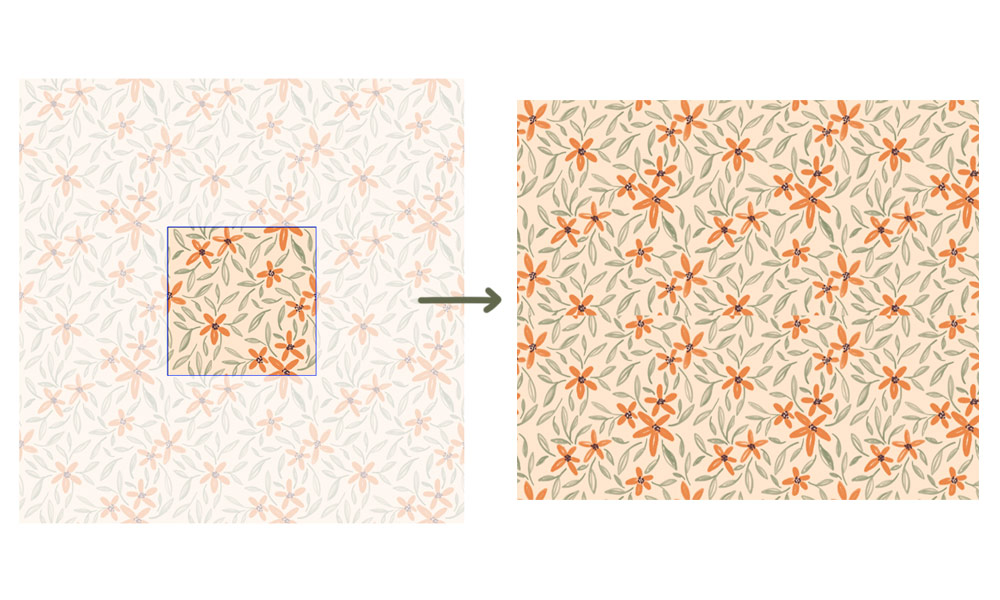
Pattern Type #2: Half Drop Repeats
What is a half drop repeat?
In half drop pattern repeats, the design motif shifts vertically halfway down the repeat, creating a staggered effect. This type of repeat creates a diagonal arrangement of the pattern, which adds movement and visual interest to the design. Designers commonly use half drop pattern repeats for creating patterns on textiles/fabric, wallpapers, and home decor items, where the diagonal arrangement can create a sense of depth and sophistication.
How it repeats:
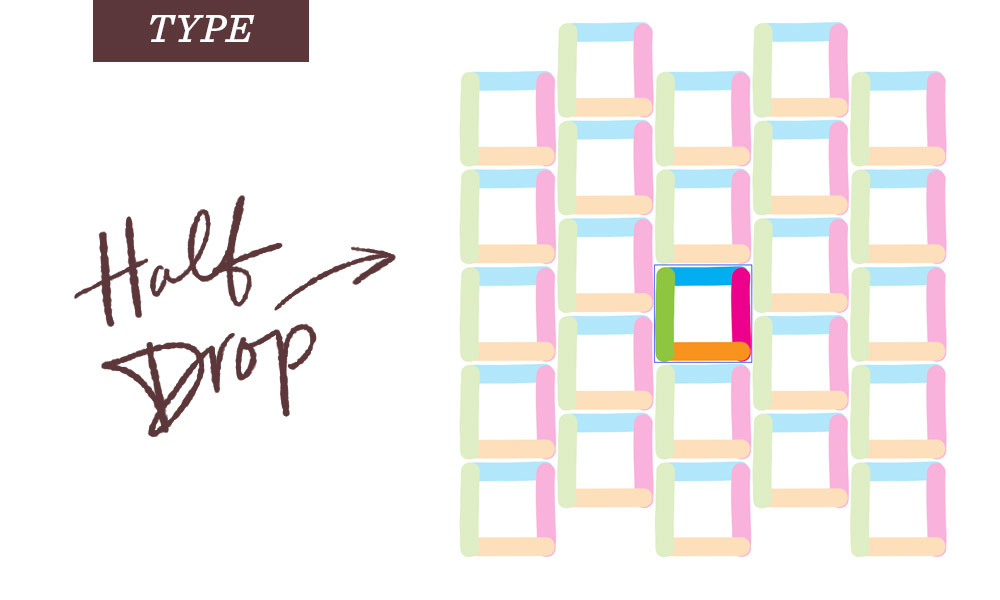
Half drop pattern repeat example (shown in the symmetry block style):

Pattern Type #3: Half Brick Repeats
What is a half brick repeat?
The half brick repeat resembles the staggered arrangement of bricks, like bricks in a wall. In this repeat, the design motifs are arranged so that every other row shifts horizontally by half of the motif’s width, which creates a visually interesting effect. This type of repeat works especially well in designs that read horizontally or have elements with a strong landscape or horizontal presence. Think mountains, streaky clouds, birds flying left to right, etc. By using a half brick repeat with these elements, the half offset can create more visual appeal and interest, since those strong horizontal elements aren’t stacking directly on top of one another.
How it repeats:
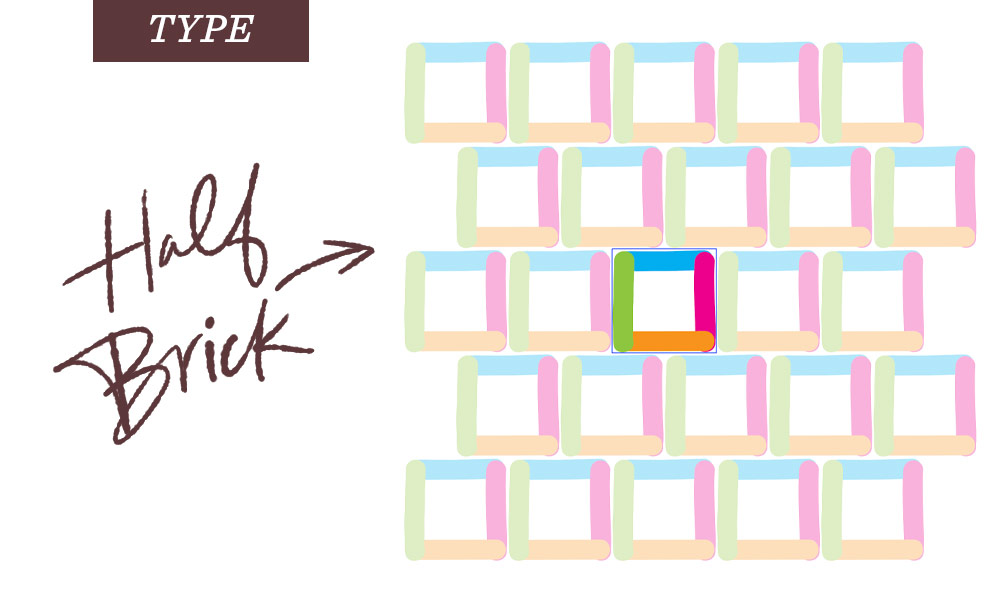
Half brick pattern example (shown in the block style):
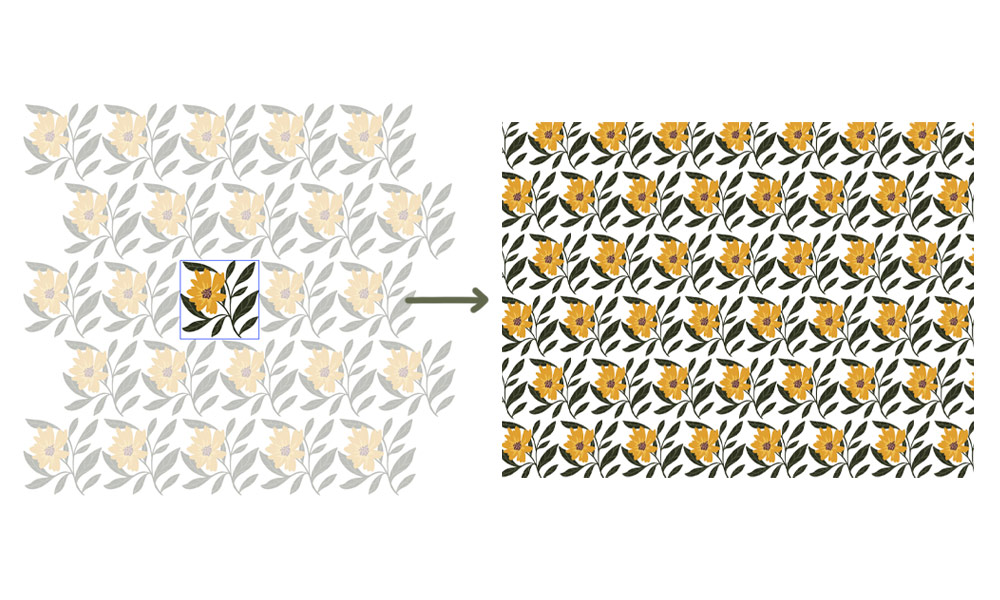
Pattern Repeats: Style and Substance
While pattern types describe how a pattern repeats, style is all about how your design elements are arranged within that repeat.
There are several different types of pattern styles, so let’s focus on the 3 most obvious and common styles: Block, Symmetry Block and Toss (or Random)
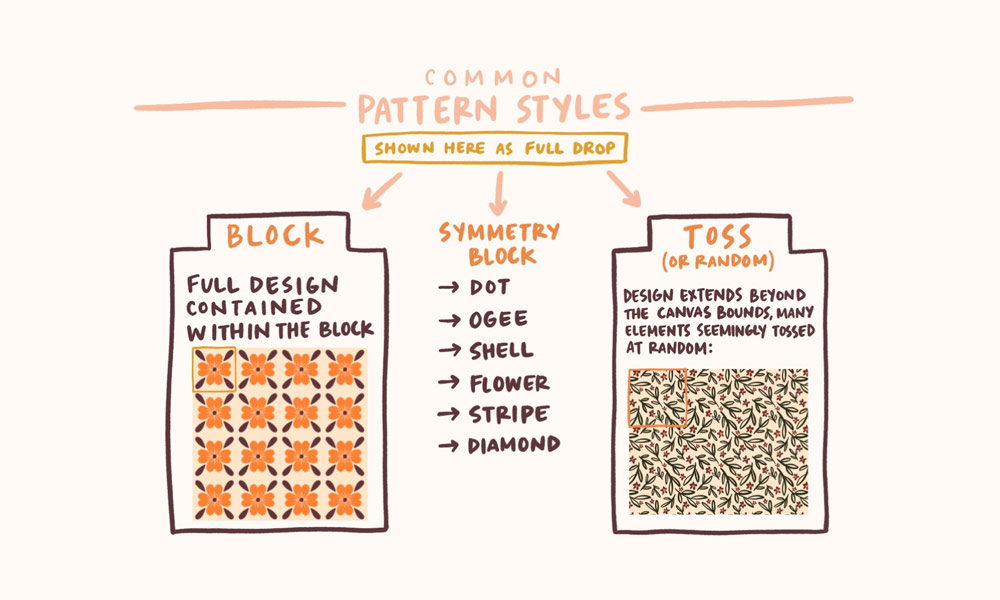
Bock Style Patterns
Block style patterns can be applied to all 3 pattern types, since all of the design elements are contained fully within the pattern square. This means that no design elements extend beyond the bounds or edges of the square, allowing the viewer to immediately discern the pattern type used.
Block style applied to all 3 pattern types:
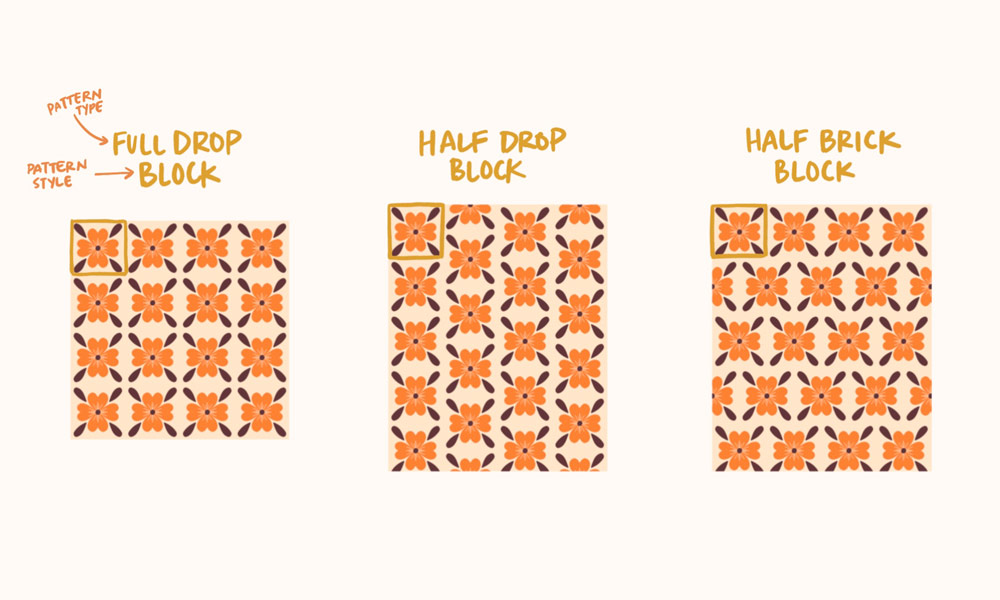
Symmetry Block Style Patterns
The symmetry block style is just like the block style with the addition of a shape within that block.

Here are some common shapes within the symmetry block style:
Dot
Ogee
Shell
Flower
Stripe
Diamond
Symmetry block style (dot) applied to all 3 pattern types:

Symmetry block style (ogee) applied to all 3 pattern types:
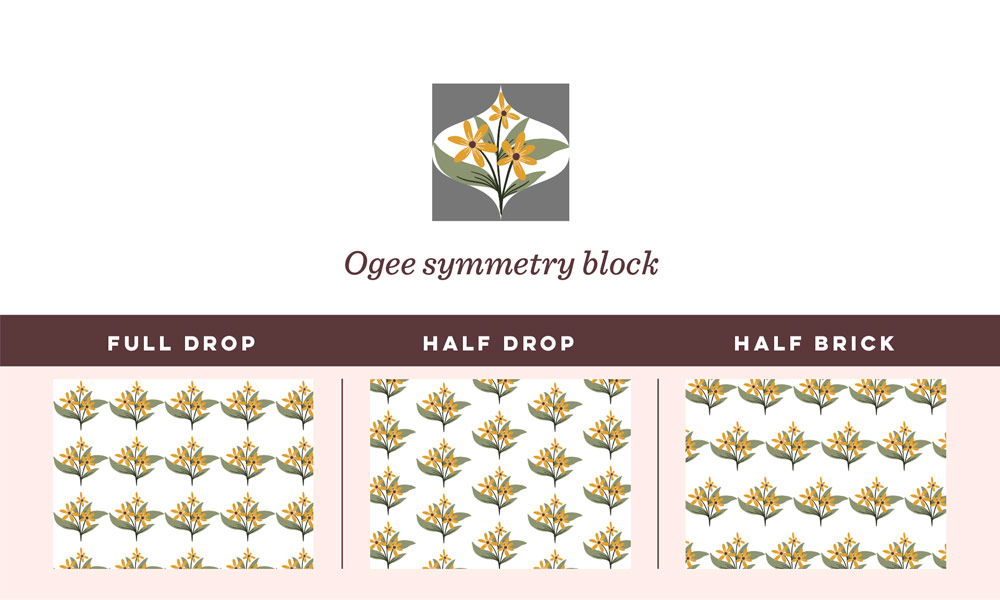
Toss Style (or Random) Patterns
Toss style patterns, which can also be referred to as random style patterns, are arguably the most popular of all pattern styles. This style tends to hide repeats the best, especially when applied to half drop motifs or half brick pattern types. A toss style is generally composed of numerous elements, seemingly scattered or ‘tossed’ at random throughout.
Toss style applied to all 3 pattern types:
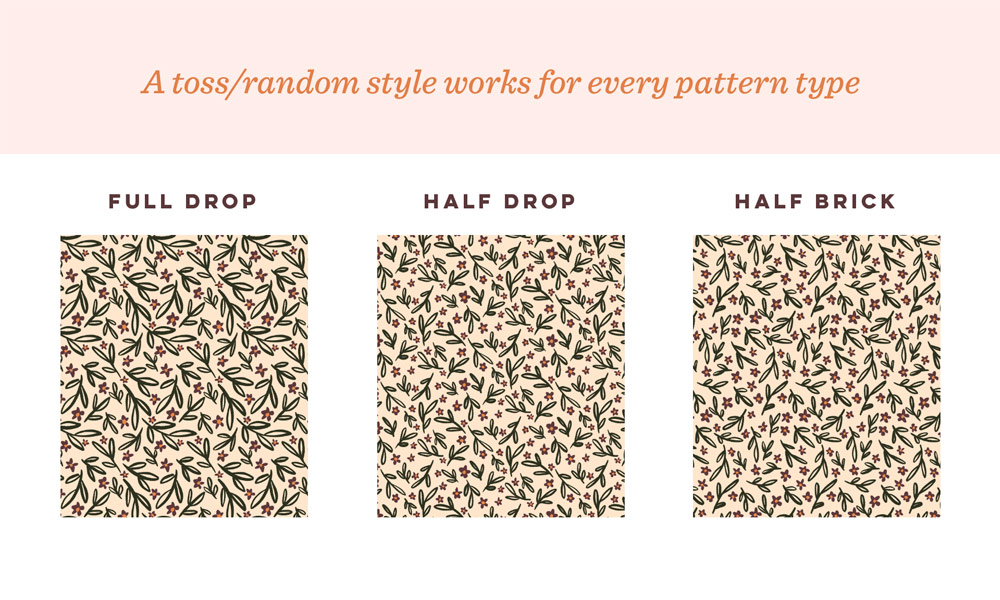
Pick up your free Pattern Types Cheat Sheet!
Keep a cheat sheet handy of everything covered here to spark new ideas and combinations!

Tips for creating successful pattern repeats
Once you have a solid understanding of the pattern types and styles, you can begin exploring creative variations to make your patterns truly unique. Here are some tips to help you create successful pattern repeats:
Experiment with Scale: Try scaling your pattern blocks up or down to create different visual effects. Larger scale patterns can make a bold statement, while smaller scale patterns can create a more delicate and intricate look.
Play with Color: Experiment with different color combinations to create unique and eye-catching patterns. Consider using contrasting colors for a bold and dynamic effect, or using harmonious colors for a more soothing and cohesive look.
Style it up: Apply different pattern styles to your types and different types to your styles. See which you like best and how you can refine and push your ideas further.
Experimenting is the name of the game here! The more you practice and play, the more you’ll see your patterns improve. You’ll learn quickly what works and what doesn’t and what your preferences are.
Some days I’ll create a bunch of swatches and just focus on creating different configurations of color using the same elements. Other days, I’ll keep one color palette and change up the elements. Another day I’ll play with different pattern types using the elements and colors I liked best. Keep it fun and keep the focus on one thing at a time. You’ll avoid overwhelm this way and get to results you love even quicker.
That’s a wrap! Next Steps
If you’re not sure which pattern type or style to use, begin by looking at the elements you plan to include at the beginning of your design.
Do they have tall verticals?
A full drop may just be the trick.
Strong horizontals?
Stick to half brick or full drop.
A beautiful toss of different themed elements?
Give the half drop a try.
Seeing your artwork repeat is one of the most fulfilling feelings as a creative and all the applications make that effort even sweeter. Check the additional resources section for where to go from here!
Additional Resources
If you’re looking to learn more about creating custom repeat patterns in Procreate, check out my course, Floral Patterns in Procreate!
My favorite place to get fabric and wallpaper printed: Spoonflower
Favorite print on demand sites: Society6, Printful + PrintedMint
Receive special offers on courses + products, a new design file every month plus instant access to the Resource Library!

Pick up over 50 design + lettering files as our gift to you when you join the Tuesday Tribe for free!
error
Congrats!
Please check your email to confirm.


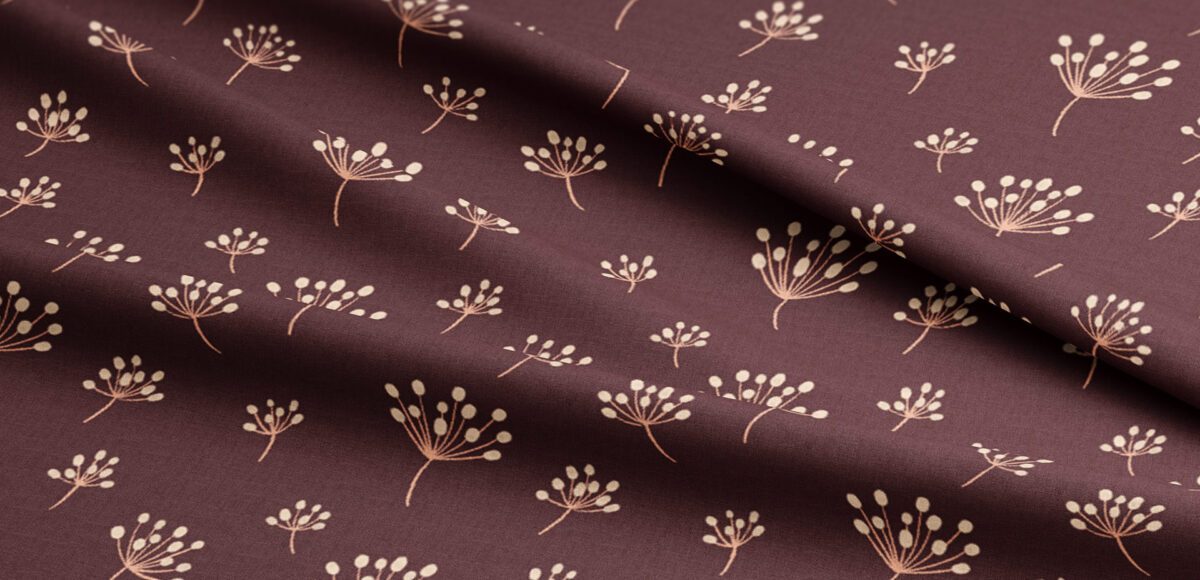
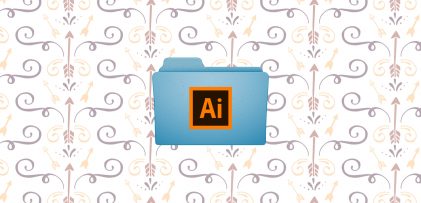
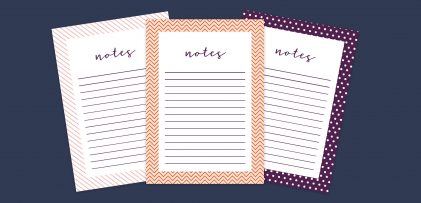
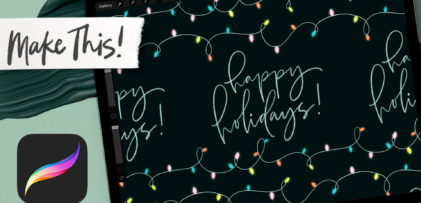
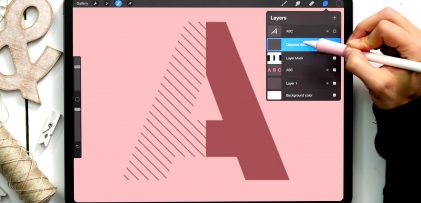
Ledys | April 18, 2023
|
Thank you for the awesome article, Teela! Can’t wait for the class!!
Teela | Author | April 19, 2023
|
Thank you, friend! Can’t wait to see what you’ll make!